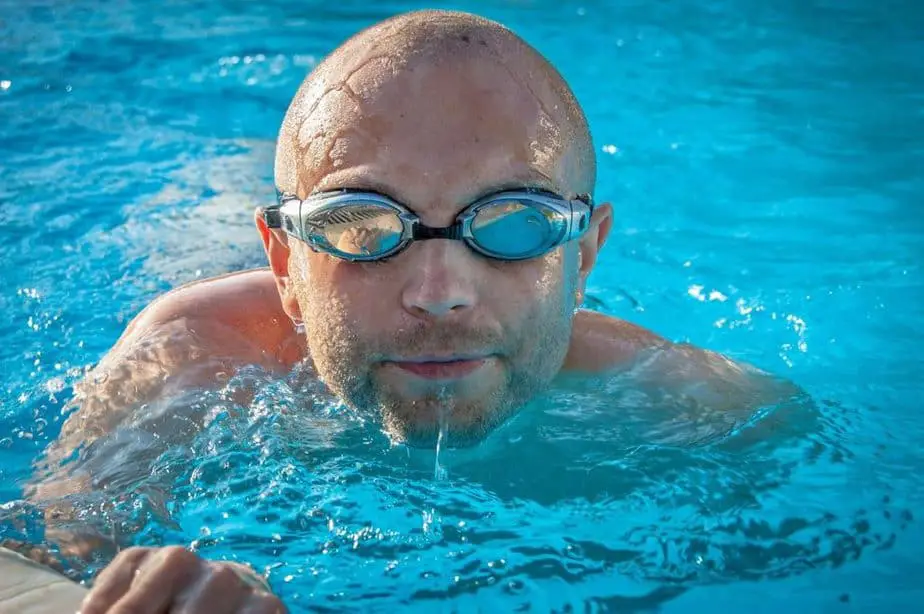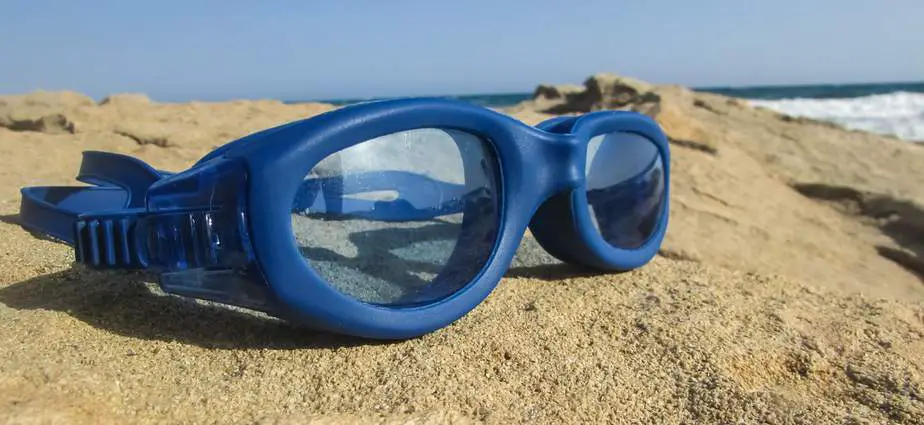Chances are you’ve got an old pair of swim goggles lying around, and you might be wondering if you can snorkel with swim goggles instead of a snorkel mask. While you can technically snorkel with swim goggles, it is not recommended because you won’t be able to equalize the pressure in your goggles if you dive down, and snorkel tubes don’t easily attach to swim goggles.
While it seems like swim goggles and snorkel masks do similar things, upon closer inspection there are some key differences they have that make them better suited for their respective sport. If you want to snorkel efficiently, you should stick to snorkel masks. In this article, we’ll go over the reasons why snorkel masks are better than goggles for snorkeling, and provide some alternative solutions.
Snorkels Can Be Easily Attached to Snorkel Masks
Snorkel masks sometimes come with a snorkel included, but most snorkels can be bought separately and work with most masks. Additionally, snorkel masks provide you with the most comfort while you’re face down in the water, carefully observing the underwater world as you float by.
A snorkel mask is made with an inexpensive and lightweight polycarbonate lens that is connected to a watertight seal. Traditional snorkel masks are half masks, meaning they seal around the middle of your forehead to under your nose. Nowadays, full face snorkel masks are exploding in popularity due to their convenient sizing and built-in snorkel.
With a snorkel attached, you can breathe under the water’s surface. The nose cover and snorkel will keep you from getting water up your nose or choking on water. This design is ideal for breathing while submerged, but they are too large for use in competitive swimming. Swim goggles have a small profile which reduces the amount of drag in the water.
If you try to snorkel with swim goggles, you will need to wear a nose plug to keep water from entering your nose. Furthermore, the flimsy straps found on swim goggles are not ideal for a snorkel to attach to. Therefore, the snorkel may pull on the strap and break the watertight seal of the swim goggles. If you don’t own a snorkel mask, don’t use swim goggles as a second option; go rent a pair instead.
Why You Can’t Dive with Swim Goggles
You haven’t snorkeled if you’ve never dived down to get a better look at the underwater world. With a snorkel mask this isn’t an issue since they are durable and better at dealing with the increase in water pressure as you swim deeper.
For both snorkel masks and swim goggles, a thin pocket of air is trapped in front of your eyes. Diving down will cause the mask and goggles to tighten considerably, putting an enormous amount of pressure on your eyes. As you get deeper, the pressure can cause discomfort and even pain.
This phenomenon is known as “mask squeeze”, and dealing with this is where the snorkel mask shines and the swim goggles falter. Not only can dive masks withstand this pressure due to their sturdier materials and tempered glass lenses, but you can simply exhale through your nose to equalize the pressure. This is possible because the snorkel mask covers your nose as well, and you can reduce the pressure by occasionally exhaling.
With swim goggles, you’re out of luck. The pressure will keep increasing around your eyes and there’s nothing you can do about it. As such, if you’re wearing swim goggles, don’t even think about swimming deeper than 10 feet. Any more than that, and the water pressure can start to hurt you.

Swim Goggles Lowers Drag Due to Low Profile
Swim goggles are designed for swimming, not snorkeling, and this is where it excels. Whether you’re swimming in the pool or the ocean, swim goggles will protect your eyes from any debris, chemicals, or living creatures. Unlike snorkel masks, they don’t cover your nose.
The lenses are small and oval shaped and let swimmers see enough so that they can swim where they need to go. In competitive swimming, sometimes the difference between first and second place is one-tenth of a second. As such, swimmers are trying to reduce as much drag as possible and the small profile of swim goggles makes this possible.
Furthermore, the straps are designed to maintain the watertight seal without digging into the skin. Since swimmers are constantly swimming along the surface and swimming in a lane, they don’t need the same wide angle field of vision that snorkel masks provide.
Reasons to Wear Swim Goggles
We feel that you should wear the appropriate equipment for the sport you want to participate in, and in this section we are going to address some arguments people may make for substituting swim goggles while snorkeling and why these arguments don’t hold water.
Saves Money
Most people already own a pair of swimming goggles, so why spend more money on an activity that you barely do if you only need to get yourself a snorkel?
While we can certainly see the logic behind this, we feel that the money would be well spent. If you want your snorkeling experience to be positive, you should either buy or rent a pair of snorkel masks.
Chances are you spent a good deal of money to vacation at a tropical destination, so why risk ruining this trip with a bad snorkeling experience? A decent snorkel mask costs anywhere from $25-50, and renting costs even less. That is a small price to pay for a significantly improved snorkeling experience.
Your Facial Hair is in the Way
If you’ve got a nice ‘stache that you want to keep, you might be considering wearing swim goggles. A snorkel mask that can’t provide a tight seal over a mustache is no good, but there are equipment and techniques to get around this.
Before shaving off your facial hair, consider applying silicone grease to make a stronger seal. Failing that, you may have to compromise and shave off a few millimeters off the top of your mustache.
You Have Prescription Lenses
Even if you have prescription swim goggles, you can purchase prescription snorkel masks for relatively cheap as well. There are many options available, such as purchasing bonded corrective lenses or magnifiers.
Can You Snorkel with Swim Goggles – The Verdict
Regardless of where you plan on swimming, it is important that you have the correct eye wear to keep your eyes safe. Snorkel masks, dive masks, and swim goggles all serve a similar purpose – to let you see in the water by reducing the visual distortion and protecting your eyes.
Beyond that, however, there are some key differences that make them suited for different tasks. It is not recommended to use these masks outside of their respective sport. If you try to snorkel with swim goggles, you may encounter multiple issues such as: water entering your nose, water leaks caused by the snorkel breaking the seal, or extreme pressure around your eyes if you dive down even a little bit.
If you want to snorkel, we recommend doing so with the tried and true snorkel mask. We recommend you check out our guides on the best snorkel mask for small and narrow faces, as well as how to take care of your snorkel mask.


